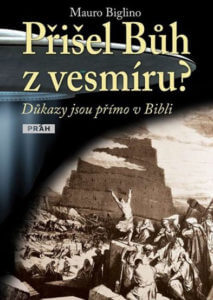
Abaddon
 26. 04. 2024
26. 04. 2024



 16. 04. 2018
16. 04. 2018

Researchers have recently found what is considered the "first known Greek copy" of the ancient heretical Christian manuscript, which is proof of Jesus' "secret" teachings to his brother James. The ancient manuscript was discovered at Oxford University by biblical scholars from the University of Texas at Austin.
To date, only a small number of texts from the Nag Hammadi Library - a collection of 13 Coptic Gnostic books discovered in Upper Egypt in 1945 - have been discovered in Greek, their original translation language, the researchers say.
Earlier this year, however, religious studies scientists at Texas University, Geoffrey Smith and Brent Landau, discovered several Greek fragments from the 5th or 6th century, the Greek part of the First James Apocalypse, which was believed to have preserved only its Coptic translations, explains the journal Science.
"Saying we were excited, once we realized what we found, it would be simplified"Smith said, assistant professor of religious studies. "We have never speculated that the Greek fragments of the First James Apocalypse have remained since antiquity. But they were there, right in front of us."
The old text details the "secret teachings"Jesus Christ to his brother James. In the text, Jesus reveals details of the kingdom of heaven and future events that are to take place, as well as James' inevitable death.
"This text expands the biblical account of Jesus 'life and ministry by giving us access to discussions that allegedly took place between Jesus and his brother, James - secret teachings that allowed James to be a good teacher after Jesus' death., "Smith said.
As Smith explains, such texts would fall outside the canonical boundaries set by Athanasius, Bishop of Alexandria, in his "Easter letter 367"Which was characterized by 27. book New Testament: "Nobody can add anything and nothing can be removed from them."
The researchers concluded that the text was most likely a "teacher model" that helped students learn to read and write because it is neatly written, with a uniform handwriting and words divided into syllables.
"The scribe divided most of the text into syllables using dots. Such divisions are very unusual in old manuscripts, although they regularly appear in manuscripts that have been used for educational purposes., "Explained Landau, lecturer at UT Austin, the Department of Religious Studies.
Smith and Landau published the discovery at the annual meeting of Biblical Literature in Boston in November 2017 and are working to publish their introductory conclusions in Greco Roman Memoirs, the Oxyrhynchus Papyri series.

Did God come from the universe?